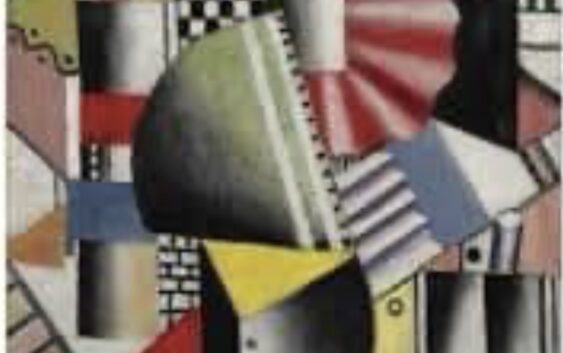Fernand Leger: Tubist Abstractionist of Machine Age Promulgated Pop Art Movement

Fernand Leger: Tubist Abstractionist of Machine Age Promulgated Pop Art Movement
Fernand Leger, in thought and deed, was a ground breaking artist. His tubist variations of cubism spiked with Machine Age abstractionism spawned highly recognizable idiosyncratic masterworks which fostered the Pop Art Movement.
To better understand and appreciate Leger’s art, let us contemplate what he believed, as expressed in his own words:
“The feat of superbly imitating a muscle, as Michelangelo did, or a face, as Raphael did, created neither progress nor a hierarchy in art. Because these artists of the sixteenth century imitated human forms, they were not superior to the artists of the high periods of Egyptian, Chaldean, Indochinese, Roman, and Gothic art who interpreted and stylized form but did not imitate it.”
“Modern man lives more and more in a preponderantly geometric order. All human creation mechanical or industrial is dependent on geometric intentions.”
“I organize the opposition between colors, lines, and curves. I set curves against straight lines, patches of color against plastic forms, and pure colors against subtly nuanced shades of gray.”
“The craving for colour is a natural necessity just as for water and fire. Colour is a raw material indispensable to life. At every era of his existence and his history, the human being has associated colour with his joys, his actions, and his pleasures.”
“Above all, it is a matter of loving art, not understanding it.”
Leger worked in a vast variety of media from murals to stained glass to mosaics. Born in France in 1881, he died there in 1955. Throughout his long career he continuously taught and lectured and influenced countless students in this manner. He himself had been rejected by Ecole des Beaux Arts, but attended the school nevertheless as a non-enrolled student, later saying the three years he spent there were wasted. Early on, in 1905, he was influenced by the Impressionists, but later destroyed almost all his paintings from that period. Originally an architecture student, he began to devote his life to painting at 25. He was influenced by a Cezanne retrospective in 1907, and geometric forms began to populate his works.
Another influence on his work was World War I, both its horrors and its machines. A soldier in the war, he experienced firsthand its terrors when he spent two years at the front and almost died in a mustard attack in 1916. The machines of war he witnessed fascinated him and later he created pictures with monstrous robot-like creatures, reflecting a combination of the fear and the fascination.. Later, he was to continuously mesh men and machines in his works.
Leger began to consider the human form as an object, which to his mind liberated its possibilities for representation and interpretation by a modern artist. He was also consumed with a passion to express the vibrancy of modern life in the city and to do that he developed a new methodology of expression in paintings which intermingled objects with living things in a flattened, multi-colored, geometric context which became his trademark. Consequently, the Tate Museum has described him as “the man who invented a new form of cubism to capture modern life.” This was termed “tubism” by the art critic Louis Vauxcelles. Indeed, by frequently using cylindrical forms to create fragmented and isolated images, he was able to convey unique perspectives which also incorporated his architectural training and experiences with weapons and machines.
Another somewhat surprising influence on Leger was the circus. He loved it throughout his life because he felt its dynamism allowed him to break the restraints of life, expand his freedom and horizons, and literally leave the ground. The direct result of this influence was the creation of paintings which contrasted immobility with figures and objects in motion.
Very much interested in film, and working with the likes of Man Ray, he produced avant-garde films and also worked in designing costumes and sets for ballet.
A socialist, his primary purpose in making all forms of his art was to bring enrichment and joy to all. His unique depictions in every form he attempted gave everyday characters within everyday scenes “dignity in their normality,” as the Tate Museum has stated.
Leger visited the United States in 1935 and lived here between 1940 and 1945. He was honored with shows at the Museum of Modern Art in New York and the Art Institute of Chicago.
He shall be remembered as a humane revolutionary in art who offered a remarkable and distinctly idiosyncratic perspective of the modern world. His works firmly establish him as a modern artist of the first rank.



















